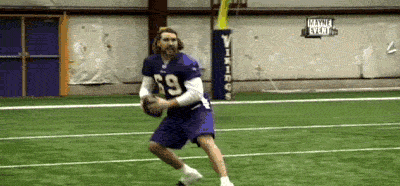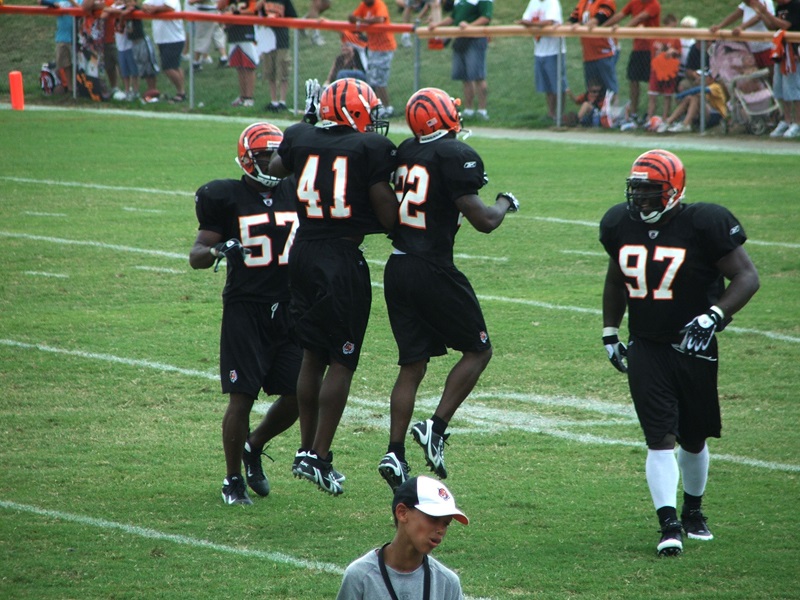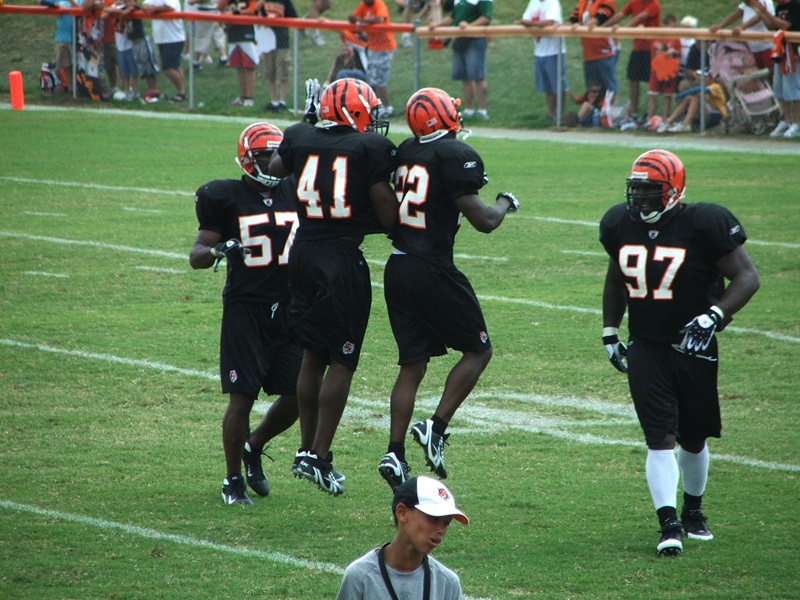
Thanks
If you’re new to the RSP blog, every Friday I post Reads Listens Views – items I’m consuming on the Internet. Some of it is football, a lot of it isn’t. You won’t like everything I share, but I believe you’ll like at least one thing each week. It’s also a chance for me to thank you for reading my content on this blog, at Footballguys, Football Outsiders, and (each January) The New York Times.
And most of all, I get to thank those of you who support my work here and elsewhere by purchasing The Rookie Scouting Portfolio publication.
For the uninitiated, the RSP is The Rookie Scouting Portfolio, my annual publication that is the most comprehensive analysis of skill position players around. I have nearly 1300 pages of quality content (just for 2013) to back that up. Learn about it here. You can download 2013’s publication ($19.95) or get past issues at half price ($9.95) at this link. I give 10 percent of each sale to Darkness to Light, a non-profit devoted to preventing sexual abuse in communities through the creation and implementation of training and awareness programs.

Evan Silva, thank you for reminding us on Twitter of this gem.
Listens
[youtube=http://youtu.be/EXOUkzIEib8]
I’ve played my share of Derek Trucks guitar solos in this weekly feature, but Susan Tedeschi performs a tasty one here.
Football Reads
- Football Outsiders’ Film Room – Cian Fahey does a sweet job studying Ryan Tannehill and Joe Haden. I like his focus on cornerbacks, it makes me think about receivers. If Cian’s knee wasn’t as old as I am I’d like to pair what I’ve learned against what he knows with a reasonable passer targeting me. Fahey, if you dish any of that Janoris Jenkins trash my way – even in Irish slang – you’ll wish I was Steve Smith.
- Guide to the NFL Workout Circuit – Former National Football Post writer and NFL safety Matt Bowen writes about the vicious cycle of in-season tryouts to join a team.
- Disruption Is Production – Josh Norris and I have a mutual admiration society going. Within a week of each other we posted articles about two of the most disruptive defensive tackles in college football and why their on-field production doesn’t always appear in the box score. Good stuff if you want to get past headlines that do nothing but perpetuate shallow knowledge of the game you love.
- Random Shots – Joe Bryant, with a little help from some great friends, writes a terrific feature on the lighter side of the NFL. Bryant has a simple, direct style that makes for great reading.
- The Gut Check No.283: The Gut Check’s Film Room – I open the home theater for a double feature of Jarrett Boykin and Case Keenum with a short feature on Joique Bell.
Views – Mandatory Education on The War on Drugs
[youtube=http://www.youtube.com/watch?v=uuCVbR8vO_U]
Listens
[youtube=http://youtu.be/Vef03k5i8VI]
Non-Football Reads
- Russell Brand Started a Revolution Last Night – Whether you agree or disagree with Brand, I like that he encourages people to question things we often take for granted. Most of all, I love that he doesn’t take a reporter’s agenda and format for granted and instead questions them at every turn on their modus operandi. Keep holding the mirror to their faces until they realize they’re behavior is a silly game.
- Why I Made Blackfish –The documentary about Sea World’s practice of keeping Orcas in captivity is heartbreaking, but a must-see. Did you know there’s no human fatality by an Orca on record in the wild? Go figure.
- Wildlife Photographer of the Year – Worth viewing some beauty in its element right about now, am I right?
- U.S. Rivers Packed With Garbage – Silly me, to think garbage only went in our landfills and legislatures.
- Thinking Fast And Slow – Adam Harstad is a long-time Footballguys’ Shark Pool regular and new staff writer. He recommended this book from heralded economist on cognitive bias. Adding it to my reading list.
Views – Most Popular Boys’ Names By Year Since 1960 – Gif From The Atlantic

Listens
[youtube=http://youtu.be/nls1HtXQe8E]
I like this pop group. These guys can sing, play, and jazz up something that would otherwise be pretty bland.










